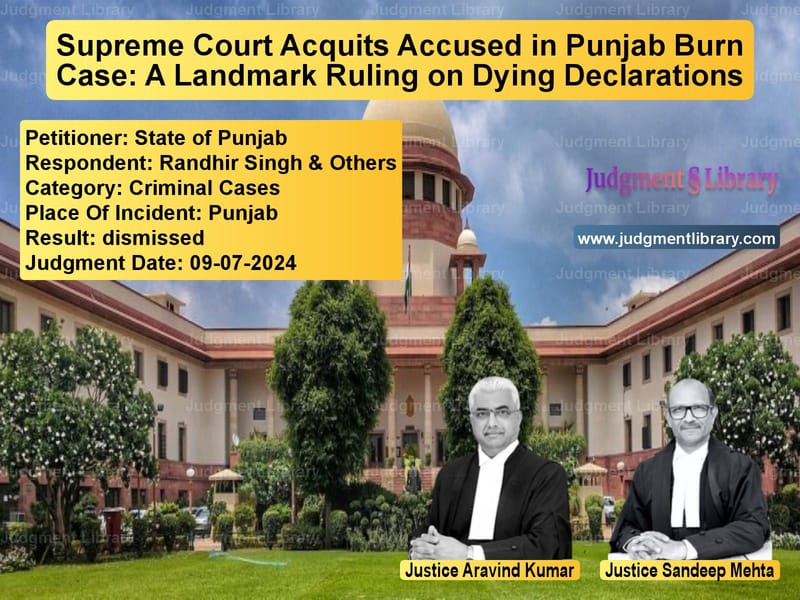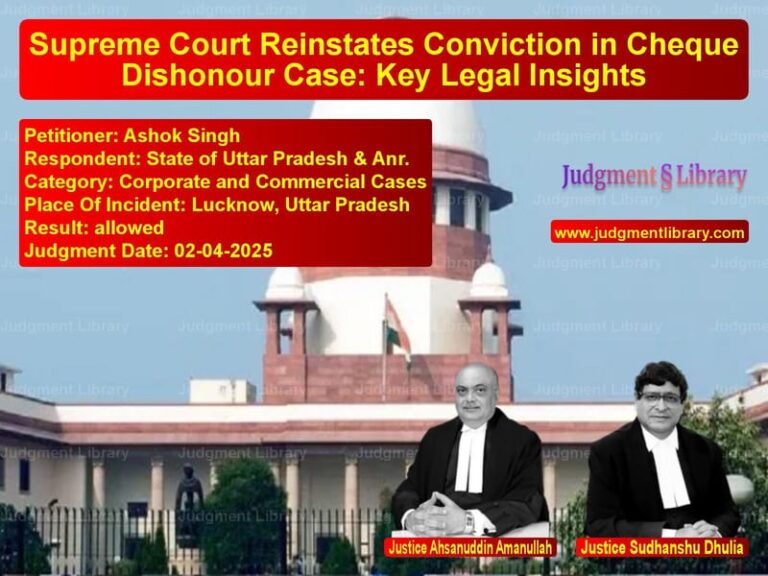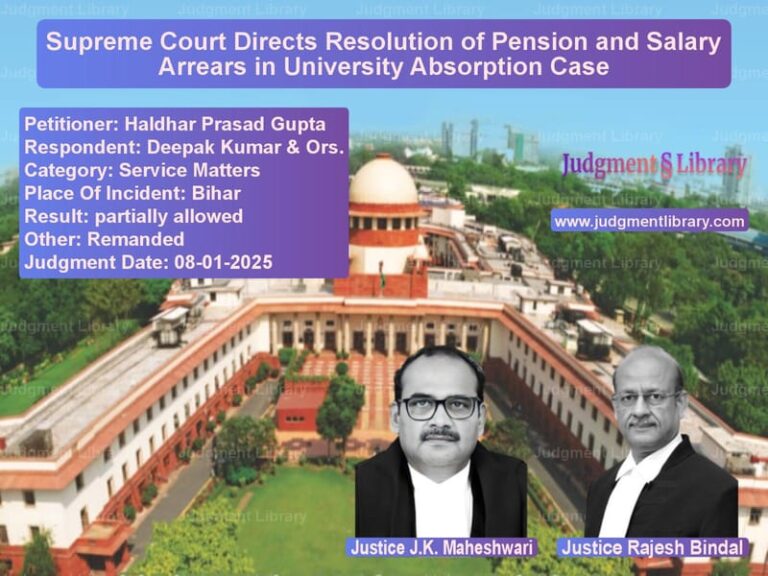Supreme Court Acquits Accused in Punjab Burn Case: A Landmark Ruling on Dying Declarations
The Supreme Court of India has delivered a significant judgment in the case of State of Punjab v. Randhir Singh & Others, where the court acquitted all accused who were earlier convicted for the murder of Kuldeep Kaur. The case revolved around allegations that the deceased was set ablaze by her husband and in-laws. The court examined crucial aspects of dying declarations, corroborative evidence, and procedural integrity, ultimately ruling in favor of the accused.
Background of the Case
Kuldeep Kaur, the victim, was married to Randhir Singh for about six to seven years before the tragic incident occurred on August 24, 1998. She was admitted to Guru Gobind Singh Medical College and Hospital (GGSMC), Faridkot, with 80% burns. The case against her husband and in-laws was based on two dying declarations she allegedly made before her death.
The trial court convicted the accused under Section 302 and Section 302 read with Section 34 of the Indian Penal Code (IPC). However, the Punjab and Haryana High Court overturned this decision, leading the State of Punjab to appeal before the Supreme Court.
Arguments of the Prosecution
The prosecution presented the following key arguments:
- The victim was harassed by her husband and in-laws over suspicions regarding her character.
- The husband, Randhir Singh, had an illicit relationship with his sister-in-law, Karamjit Kaur, which led to conflicts.
- The accused deliberately poured kerosene on Kuldeep Kaur and set her ablaze.
- The victim made a clear dying declaration to the police officer, Surjit Singh (ASI), naming the accused.
- The trial court rightly relied on the dying declaration recorded by the ASI to convict the accused.
Arguments of the Defense
The defense countered these claims with the following arguments:
- The alleged dying declaration recorded by the ASI was fabricated and unreliable.
- The second dying declaration, recorded by the Executive Magistrate, did not name any accused and was vague.
- The victim’s husband and brother-in-law had taken her to the hospital, which contradicts the prosecution’s claim of intentional murder.
- Several inconsistencies in the statements of prosecution witnesses cast doubt on the case.
Key Findings of the Supreme Court
The Supreme Court meticulously examined the evidence and delivered a detailed judgment addressing multiple legal aspects:
1. Reliability of the Dying Declarations
The Supreme Court analyzed the two dying declarations:
- First Dying Declaration (Recorded by ASI Surjit Singh): The court found that this declaration was unreliable as it was recorded after a significant delay and without the presence of a Magistrate.
- Second Dying Declaration (Recorded by the Executive Magistrate): In this statement, the victim did not specifically name any accused but merely stated that “the people of her house set her on fire.” The court noted that this was vague and lacked specificity.
2. Contradictions in Witness Testimonies
The court found serious inconsistencies in the statements of the victim’s family members:
- While one witness claimed to have seen the victim in a burnt condition at her matrimonial home, another stated she was already admitted to the hospital.
- The victim’s brother, Thana Singh (PW-5), who was a police officer, did not report the incident promptly.
- Independent witnesses did not corroborate the allegations of harassment.
3. Lack of Medical Corroboration
The court observed that none of the doctors who treated the victim detected the smell of kerosene on her body, contradicting the prosecution’s theory of forced burning.
4. The Role of the Accused in Taking the Victim to the Hospital
The court noted that Randhir Singh and Baldev Singh took the victim to the hospital, which was inconsistent with the prosecution’s claim that they had intentionally set her on fire.
Final Verdict
After weighing the evidence, the Supreme Court upheld the High Court’s decision to acquit all the accused. The court ruled that:
- The prosecution failed to establish its case beyond a reasonable doubt.
- The dying declarations were inconsistent and unreliable.
- There was no clear motive or corroborative evidence linking the accused to the crime.
As a result, the Supreme Court dismissed the appeal filed by the State of Punjab, affirming the acquittal of Randhir Singh and others.
Implications of the Judgment
This ruling is significant as it reinforces the legal principles governing dying declarations. The court emphasized that such statements must be free from doubt and corroborated by independent evidence. Additionally, the judgment highlights the importance of procedural integrity in criminal trials.
By acquitting the accused, the Supreme Court has reaffirmed that courts must prioritize fairness and due process, ensuring that convictions are based on solid evidence rather than conjecture.
Petitioner Name: State of Punjab.Respondent Name: Randhir Singh & Others.Judgment By: Justice Aravind Kumar, Justice Sandeep Mehta.Place Of Incident: Punjab.Judgment Date: 09-07-2024.
Don’t miss out on the full details! Download the complete judgment in PDF format below and gain valuable insights instantly!
Download Judgment: state-of-punjab-vs-randhir-singh-&-othe-supreme-court-of-india-judgment-dated-09-07-2024.pdf
Directly Download Judgment: Directly download this Judgment
See all petitions in Murder Cases
See all petitions in Bail and Anticipatory Bail
See all petitions in Attempt to Murder Cases
See all petitions in Fraud and Forgery
See all petitions in Custodial Deaths and Police Misconduct
See all petitions in Judgment by Aravind Kumar
See all petitions in Judgment by Sandeep Mehta
See all petitions in dismissed
See all petitions in supreme court of India judgments July 2024
See all petitions in 2024 judgments
See all posts in Criminal Cases Category
See all allowed petitions in Criminal Cases Category
See all Dismissed petitions in Criminal Cases Category
See all partially allowed petitions in Criminal Cases Category







